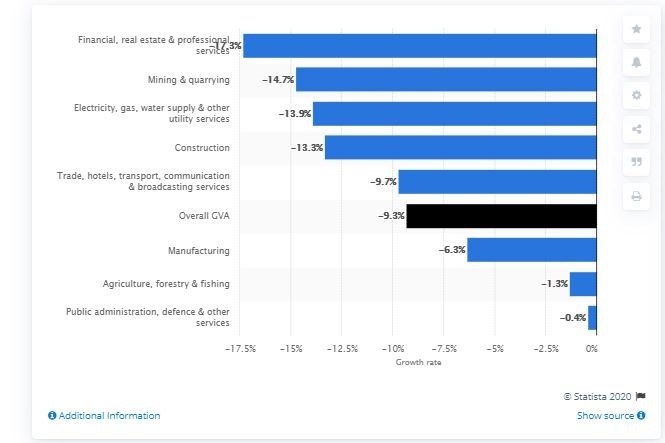The histrionic spread of COVID-19 has affected lives, livelihoods, communities, and businesses worldwide. Companies are adopting several measures to minimize this deadly virus’s impact on the business culture and public health.
The changes in organizations are directly impacting the work culture. Most of the companies are shifting their entire corporate culture to the digital platform.
Here, in the above paragraphs, you must have heard words like company culture, corporate culture, and business culture. But let me ask you, Do you know the meaning of business culture?
If no!!
In this blog, I have explained what business culture is and how it has changed after the COVID-19?
Highlights of Contents
What is Business Culture and Why it is Important?
Business culture is a close blend of qualities and practices that control the different activities of an organization. There are a lot of objectives to provide for directing the best possible work process. A few organizations figure out how to develop a robust corporate culture at the right time and stick to it, while others build up theirs gradually, through experimentation.
In either case, a business’s culture is essential for both employee satisfaction and business success. So, improving corporate culture will help you in increasing employee engagement.
However, in this current scenario, maintaining company culture, sustaining productivity levels, and ensuring safety to their employees are the emerging challenges in front of business holders. The below graph shows the estimated impact on organizational culture after COVID-19 on India by sector GVA.

Whether it is small, medium, or multinational companies (MNCs), all are suffering because of the COVID-19. 74.6% of US internet users were avoiding shopping malls, and 52.7% were avoiding general shops.
The outbreak has led the organization to set up a digital workplace to perform various activities. Moreover, technologies are helping business holders stretch their brand, reshuffled their production lines, and catered to new needs.
During this critical time, the utmost challenge for a company is to provide safety to their employees. When it comes to ensuring safety to a different population of workers in the workplace, it is a bit tough. However, to deal with this problem, companies are offering work from home to the bunch of workers whose reporting to an office is somewhere manageable.
They are managing this work culture with the help of technology. Employees coordinate with each other through modern tools like Google Doc, Google Sheet, Skype, Zoom, etc. As well as they are including cloud-based project management tools such as:
- Jira
- Zoho Projects
- Celoxis
- Clarizen
- LiquidPlanner
- Mavenlink
Now, let’s see what changes companies have adopted in their corporate after COVID-19.
Impact on Organizational Culture After COVID-19
Organizations are coming up with a new policy to avoid any statutory losses. They are transforming the working culture to influence their employees to perform effectively in this deadly situation. Some of the significant steps undertaken by the organization to develop a business culture after COVID-19 are listed below:
1. Shifting Towards Remote Work Culture
In this COVID period, it is highly recommended to maintain social distancing. This is why most companies are bringing the work from an office environment to a remote place. This step helps in reducing the impact of a potential pandemic. However, some of them might find it difficult who haven’t adopted it earlier.

To deal with this problem, firms are offering various training programs online to make use of new technologies. Working remotely has become an essential part of our life. This digitalization adaptation in the workplace is cultivating new opportunities to use distributed workforce models.
2. Virtual Monitoring of Work Report
According to the Gartner report, 16% of employers use technologies to monitor their employees’ activities. Others are visualizing it through their productivity.

Nowadays, because of the COVID-19 outbreak, companies are adopting virtual clocking in and out of working models. In this model, they are also able to track the work reports as well as monitoring computer usage through the use of modern tools.
Before the pandemic, organizations have the other tools like biopic punch in and out machines to check the employees’ presence. Even in offices, employers have monitoring tools, but new remote monitoring tools advance that trend.
These modern tools help collect remote workers’ health and safety data. Moreover, companies are frequently using these to catch up with employee information and analytics during this virtual workplace.
3. Replacing Full-Time Employees With Part-Time Workers
The financial crisis of the pandemic has caused various workers to lose their jobs. To deal with the economic effect, companies started decreasing their workers, lowering the budget for any projects, changing employees’ working hours, and much more.

Gartner examination shows that corporations will keep on extending their utilization of contingent workers to keep up greater adaptability in the workforce the board post-COVID-19 and consider presenting other occupation models they have seen during the pandemic, for example, ability sharing and 80% compensation for 80% work.
Further, 32% of organizations are replacing full-time employees with part-time workers as a cost-saving model. But some of them are coming up with new workforce management where HR has given the responsibility to evaluate how performance these workers have and decide whether they will be capable of the same benefits as their full-time workers.
4. Financial Assistance And Adjusted Hours Of Operation
The pandemic has expanded managers’ patterns assuming an extended job in their workers’ economic, physical, and mental prosperity. They support sick leave, money related help, flexibility in working hours, kid care arrangements, and many more.

The current financial emergency has likewise pushed the limits of how businesses see the worker experience. Individual factors, instead of outer components, overshadow what is necessary for associations and workers the same. Utilizing such measures can be a compelling method to advance physical well-being and improve the workers’ emotional prosperity.
5. Preparing Employees For Next Skills And Roles
Constructing the workplace to fight against the COVID-19 pandemic, firms must require a post-pandemic beginning where the focus must be less around jobs and more around enhancing their employees’ skills. They have to urge workers to create fundamental aptitudes and level up their skills to meet other job responsibilities.

Before COVID-19, primary roles, we’re enough to meet the requirements or strategic goals. But, presently, businesses understand that there is a requirement of more skilled professionals who can perform different roles more efficiently. To maintain the fundamental work processes, companies are preparing employees for the next skills and tasks.
6. Digital Communication System
Digital communication practices are helping the companies to develop new or optimize the existing business culture that is leading to the enhancement of customer or employee experience. The main motto to choose this type of communication system is to have a smooth workflow without any blockage.

Preceding COVID-19, associations were at that point confronting various challenges. Representatives and coming competitors will pass judgment on associations by the manner they treated workers during the pandemic.
So, the choices made today or decisions taken during the pandemic will have a long-term impact on the employment brand. Therefore, corporate reorganize the importance of digital transformation and hence using tools like Skype, Zoom to communicate with their clients and staff.
Also Read: How to Recieve Payment from Your Client Timely?
Wrapping UP
Today, technologies are making remote work much more manageable. For the transformation in work culture tools like Google docs, Hangouts, Zoom, and Skype for communication, as well as cloud-based process management tools such as Jira, are essential elements.
Moreover, considering the current scenario, an organization needs to cultivate digital work culture. This business culture after COVID-19 might take time, but it would be a worthwhile investment. With this deadly worldwide pandemic, if you’re running any startup or small business, you must be updated with new business plans. If you find any difficulties in developing digital work culture, feel free to take help from a business consultant.
Frequently Asked Questions (FAQs)
Q1- Why is creating a company culture is essential for business?
A1- Creating a positive company culture helps you set values and goals among employees and increases company morale. It comprises the beliefs and behaviors that influence how employees and leaders interact with one another and how they handle business transactions. Also, a positive work environment allows your people to look forward to coming to work every day.
Q2- How is the IT industry coping with the COVID-19 situation?
A2- The global spread of COVID-19 is affecting all the industries in all directions. But to deal with this outbreak, many IT organizations are adopting trending technologies to start their work in an effective manner. They understand, if you do not invest in the latest technologies for your business, you may end up losing your competitive edge.
Q3- What are the advantages of technology in the workplace?
A3- However, there is various importance of using technology in the workplace. Some of the useful points are listed below:
- The technology speeds up the workflow of an employee.
- It also increases the efficiency to perform any type of task.
- It allows the companies to offer Work From Home flexibility.
- Able to access the system remotely.
- New technologies are constantly improving the way of communication.

